Sunday Scroll: There’s no history without Black history
From The GIST (hi@thegistsports.com)

Leveling The Playing Field
Happy Black History Month!
As the first weekend of Black History Month (BHM) comes to an end, today we’re celebrating Black sportspeople who’ve broken barriers in sports — from the court to the field to those calling the shots.
- While there’s a lot to celebrate, there’s also plenty of work to be done in making sports a more inclusive, representative, and safe space for everyone. Let’s dig in.


— Three-time WNBA MVP A’ja Wilson talking about becoming more comfortable publicly vocalizing her experiences as a Black woman, inspiring the publishing of her first book, Dear Black Girls, last year. Mic drop.
📓 Segregation and integration
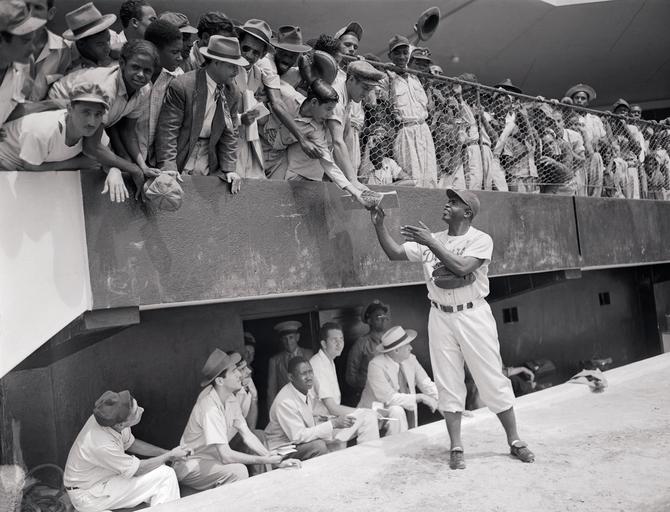
Much like other aspects of life, sports were segregated throughout the U.S. for decades, preventing Black and white athletes from competing with and against each other for much of the early 20th century.
- The exclusion of Black individuals from professional leagues led to the creation of Black-only or “Negro” teams and leagues. But these leagues often had shorter schedules, less funding, and worse equipment.
⚾ Jackie Robinson famously broke pro baseball’s “color barrier” in 1947, ending a six-decade ban on Black players in MLB. Soon after, the desegregation of the U.S. military in 1948 encouraged more pro sports leagues to gradually to integrate.
🏈 Beginning in 1920, the NFL’s formative years saw Fritz Pollard play and coach for the Akron Pros, but after his departure the league banned Black athletes…until 1946 when Kenny Washington and Woody Strode of the (now-called) LA Rams as well as Marion Motley and Bill Willis of the Cleveland Browns became the first Black players to play in the NFL’s modern era.
🏀 Four years after it’s inception, the NBA officially integrated in 1950 when Earl Lloyd, Nat “Sweetwater” Clifton, and Chuck Cooper became the league’s first Black players.
🏒 Finally, in 1958 — more than four decades after the league’s first puck drop in 1917 — Willie O'Ree became the first Black player in NHL history when he made his debut with the Boston Bruins.
While these events represented significant milestones in sports, the process of integration wasn’t simple. As they began competing with their white peers, Black athletes faced travel barriers, physical attacks, and even death threats.
💪🏾 Black women blazing the trail
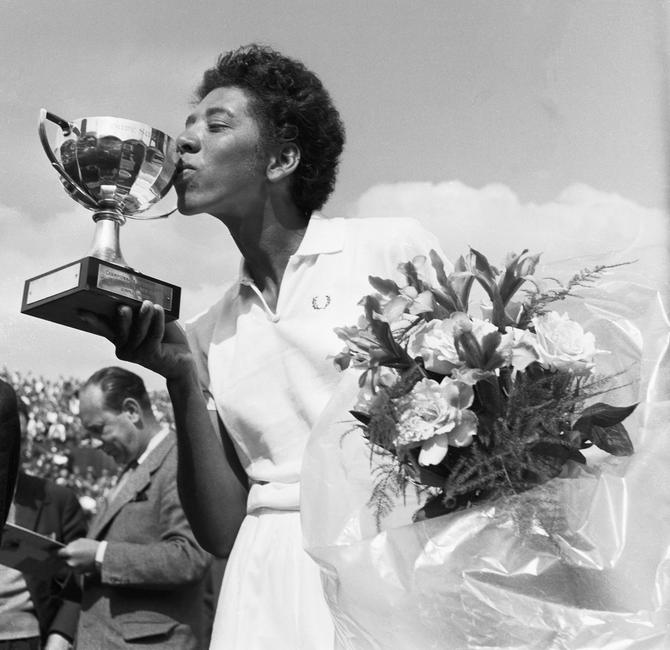
On the women’s side of pro sports, integration wasn’t quite the same because, while many men’s sports leagues were taking more inclusive steps, most women’s sports leagues didn’t exist yet. *big sigh* However, a few Black women helped set the tone for those who would follow decades later.
🎾 Althea Gibson, often referred to as the “Jackie Robinson of tennis,” was the first Black tennis player to win a Grand Slam when she won the French Open in 1956, but her journey there was littered with obstacles.
- In 1949, Gibson became the first Black woman to play in an event organized by the United States Lawn Tennis Association (USLTA, now USTA), but she was still barred from competing in what is now the U.S. Open.
- The following year, Alice Marble, a white tennis player and four-time U.S. Open champion, advocated for Gibson’s admission to the national championship in a passionate open letter.
As a result, the USLTA invited Gibson to compete in the tournament, thus breaking the color barrier in major tennis. Gibson went on to win both Wimbledon and the U.S. Open in 1957 and 1958 and racked up a total of 11 Grand Slam titles in her eight-year career.
- But why stop at tennis? Gibson was also a successful recording artist and, in 1963, she became the first Black woman to compete in the LPGA. Hey Siri, play Renaissance.
👟 The first modern Olympics happened in 1896, but it wasn’t until the 1928 Amsterdam Games that women’s track and field was an event. And in 1936 (the same year that Jesse Owens became the Olympics’ most successful athlete), Tidye Pickett made history as the first Black woman to represent the red, white, and blue.
🥇 Due to a 12-year hiatus caused by World War II, the London 1948 Summer Olympics were the first Games to be held following the memorable 1936 Berlin Games. The world was ready for change, and Black women athletes brought it.
- Audrey Patterson raced to a third-place finish in the 200-meter dash, becoming the first Black woman to ever win an Olympic medal. Then, the next day Alice Coachman high jumped into the record books, becoming the first Black woman from any country to win gold.
👏🏾 On the sidelines
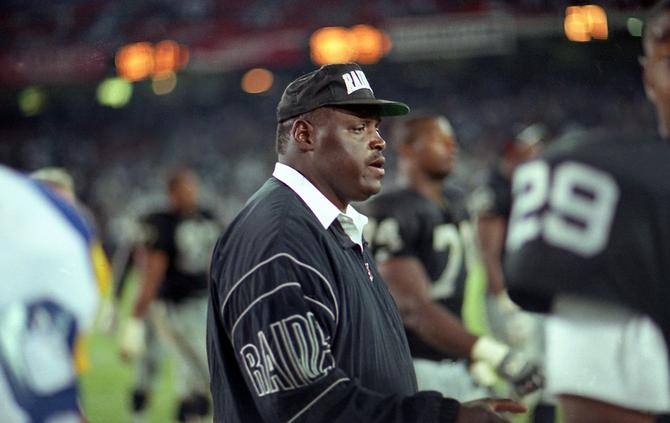
While Black athletes have become the majority in many pro leagues, there are still clear, lingering effects of segregation in leadership positions throughout the sports world.
🏈 The aforementioned Pollard became the first Black head coach (HC) in American pro sports history in 1921 when the Akron Pros hired him to both coach and play on the team. And while it was groundbreaking, the NFL didn’t see its second Black HC until nearly 70 years later, when the then-LA Raiders hired Art Shell in 1989, making him the first Black HC in the modern era.
- Since then, progress has remained slow. From 2003 to 2022, approximately four white coaches were hired for every coach of color despite non-white players making up an estimated 70 percent of the NFL’s playing pool.
Then, three years ago, Brian Flores filed a landmark discrimination lawsuit against the NFL after he was unexpectedly fired by the Miami Dolphins despite leading the team to back-to-back winning seasons in his third year as HC.
- Flores claimed Dolphins owner Stephen Ross incentivized him to lose during his first season to procure a better draft pick; he also included the Denver Broncos and NY Giants in his lawsuit for interviewing him only to comply with the NFL’s Rooney Rule.
The Rooney Rule requires teams to interview at least two external minority candidates for every HC vacancy. First implemented in 2003, it’s widely considered to be a band-aid solution to the problem, rather than a genuine attempt to heal a deep, systemic wound.
⚾ MLB instituted a similar rule, called the “Selig Rule” in 1999, requiring teams to interview at least one minority for every managerial or front office opening — but in a league where the majority of players are white, the rule has done little to diversify the managerial ranks.
🏈🏀 Even though the number of minority HCs in the NFL doubled ahead of the 2024 season, that doesn’t necessarily signal lasting change. Since 2003, non-white coaches are three times more likely to be fired after one season compared to their white peers, a trend seen across sports and even in leagues traditionally perceived to be more progressive, like the WNBA and NBA.
🗣 Black athletes calling for change
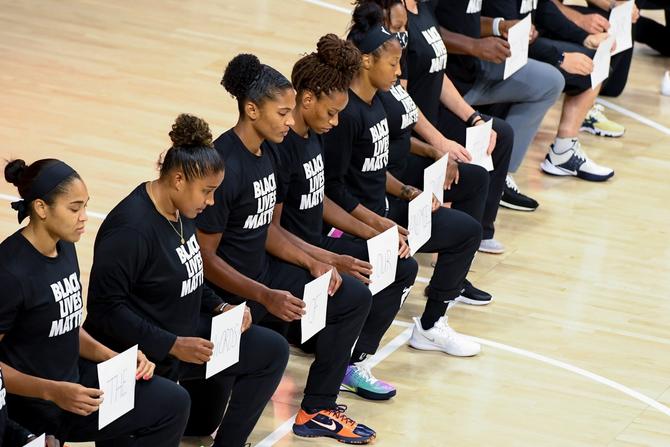
Throughout history, Black athletes have used their platforms to play a direct role in social justice movements, contributing to real political and cultural changes.
This has never been more evident than in 2020 when WNBA players were at the forefront of change and activism. The league dedicated that season to Breonna Taylor, a 26-year-old Black woman who was killed by police inside her own home in March 2020.
- Players observed a 26-second moment of silence prior to the first game’s tip-off, wore Taylor’s name across their backs all season long and continually uplifted the #SayHerName campaign, highlighting the Black women lost to police violence.
Athletes across almost all professional leagues had the world’s attention after they conducted wildcat strikes in the summer of 2020 following the police shooting of Jacob Blake in Kenosha, Wisconsin in August and the murder of George Floyd in Minneapolis, Minnesota in May.
- The NBA’s unprecedented strike lasted only a few days, but the impact was profound. Players returned to action only after the league met their demands, which included the formation of a social justice coalition and improved voting opportunities in team markets.
- Other leagues like the NWSL followed suit, calling for systemic changes in their governing bodies, but as we’ve mentioned, many of these changes still need to be addressed.
The movement underscored just how influential and effective athletes can be. Players rallied together, harnessed their collective voices and platforms, and galvanized real tangible action. Truly unforgettable.
Together With The GIST
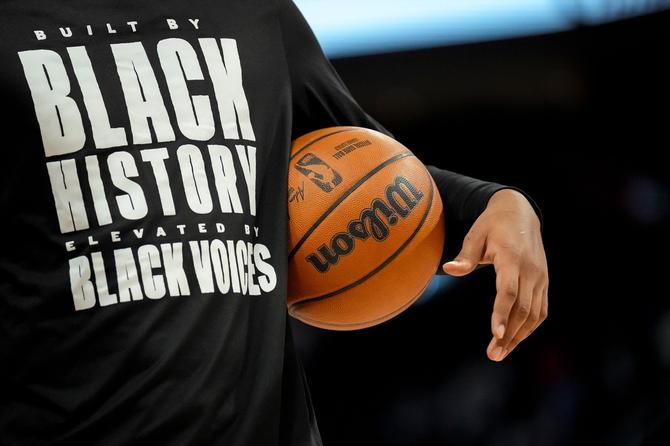
Evidently, sports are more than just a game — they’re a vehicle for change. At the GIST, we’re committed to being part of the tangible action that makes the world a more inclusive, representative, and safe space.
Here’s how we’re celebrating Black History Month:
✍️ Every Wednesday, we’ll highlight contemporary Black sportspeople who are changing the game — whether they’re making waves in the C-suite, through athlete advocacy, on the playing field, or in the media.
✅ For the entire month of February, The GIST’s Picks in our Monday, Wednesday, and Friday newsletters will feature some of our favorite Black authors, creators, and designers and their businesses.
🤳 Keep an eye on our social media accounts (@thegistusa, @thegistca) and an ear on The GIST of It, as we continue to celebrate the Black sportspeople from this newsletter while elevating others across our ecosystem.
Here’s what has GIST HQ buzzing:
📚 What to read
This book, highlighting 44 inspirational Black Americans from all walks of life. Adapted for young readers, it’s great for the whole fam.
🎥 What to watch
Bill Russell: Legend, a Netflix docu-series that focuses on the late basketball great and his inspiring life on and off the court. From setting rebounding records to marching with Martin Luther King Jr., Russell was truly extraordinary.
⛳ What to learn about
Black athletes’ history in golf. Did you know that boxing champion Joe Louis played a big role in integrating the PGA? As a talented amateur golfer, Louis openly criticized the organization and pressured them into allowing Black golfers to compete in 1952.
Today’s email was brought to you by Briana Ekanem and Lisa Minutillo. Editing by Rachel Fuenzalida. Fact-checking by Mikaela Perez. Operations by Marga Sison. Ads by Katie Kehoe Foster, Alessandra Puccio, and Lisa Minutillo. Managing edits by Ellen Hyslop and Lauren Tuiskula.